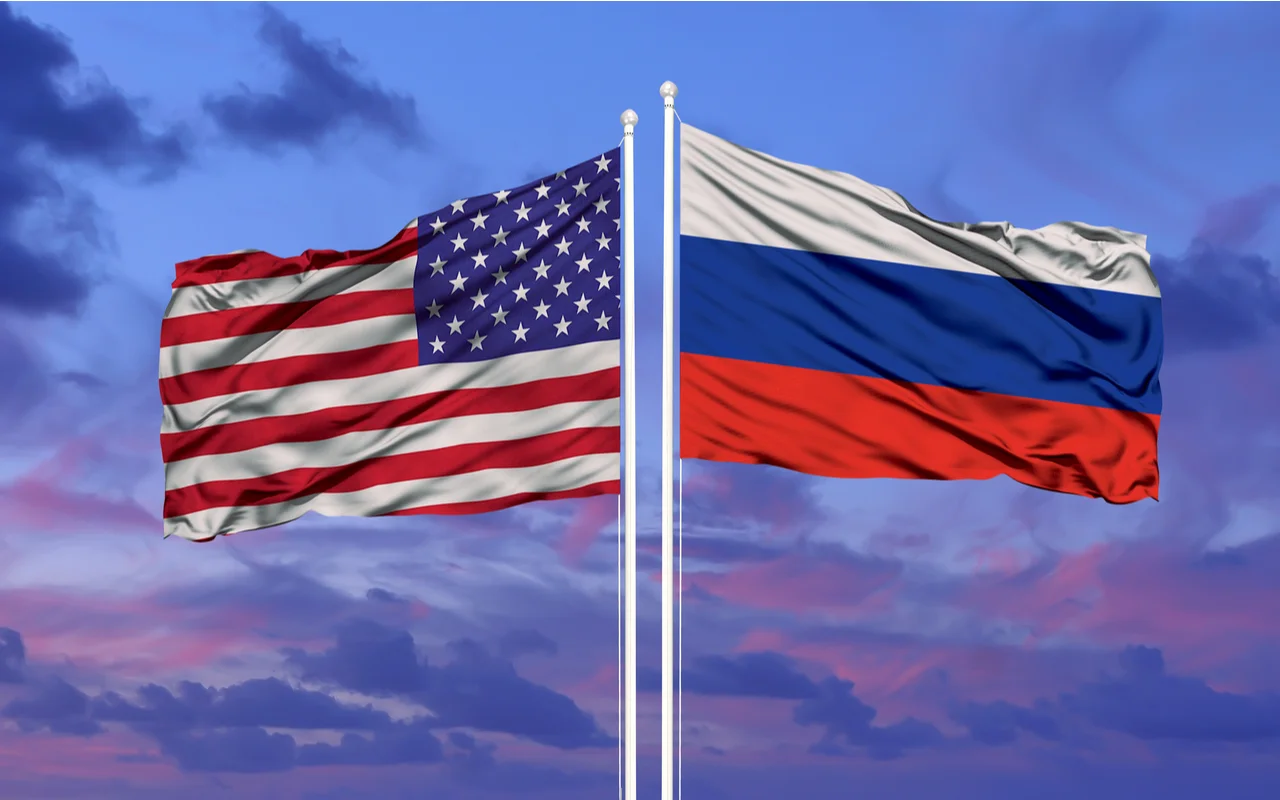What to Know About Russia and the U.S. Crypto Reserves


KEY TAKEAWAYS
- Russia’s crypto trade reached $12 billion in the first half of 2025, highlighting digital asset use under sanctions.
- $14 billion in crypto is held in Russian platform wallets, mostly private and institutional assets.
- Russia prefers gold and yuan for official reserves, viewing crypto as a complementary tool, not a foundation.
- The U.S. government holds 207,000 BTC (~$17 billion) via a Strategic BTC Reserve, formalized in 2025.
- The reserve is managed by the U.S. Treasury, including BTC, ETH, XRP, Solana, and Cardano.
- Russia’s crypto policy remains cautious and conservative, focusing on regulated banking and trade uses.
- The U.S. views crypto as a strategic economic and national security asset.
In 2025, cryptocurrency continues to play an increasingly strategic role in the global financial landscape, with governments exploring and expanding their digital asset holdings. Two significant players in this space are and the United States, whose approaches to crypto reserves differ markedly but carry considerable geopolitical and economic implications.
This article examines the real numbers behind Russia and the U.S. crypto reserves, comparing their holdings, strategies, and the broader context shaping their digital asset policies.
Russia’s Crypto Holdings and Strategy in 2025
Russia’s interaction with cryptocurrencies in 2025 reveals a complex balance of regulatory caution, pragmatic adoption for trade, and strategic skepticism. Official figures indicate Russia’s foreign trade settlements with cryptocurrencies approached $12 billion in the first half of 2025, underscoring crypto’s growing role in bypassing traditional financial channels, especially under the pressure of Western sanctions.
The Russian government, represented by Kremlin business advisor Boris Titov, has publicly positioned cryptocurrencies like BTC as approaching parity with in stability and legitimacy. Titov highlighted that global reached around $4 trillion by mid-2025, surpassing several European economies, and noted the increasing involvement of institutional investors bringing disciplined strategies to the market.
Crypto Reserves Size and Composition
An estimated 827 billion rubles (approximately $14 billion) worth of cryptocurrency is held on Russian platform wallets as of ahead 2025. Of these holdings, BTC represents about 62.1%, ETH accounts for 22%, with the remaining 15.9% distributed among stablecoins such as USDT and USDC. These figures predominantly reflect private and institutional holdings facilitated by centralized platforms rather than direct government treasury reserves.
Russia has been experimenting cautiously with cryptocurrencies in its financial infrastructure. The Central Bank of Russia allows certain derivative products linked to cryptocurrencies under regulated frameworks for qualified investors and has announced plans to let banks work with cryptocurrencies under strict capital and reserve requirements begining in 2026.
Russia’s National Reserve Approach
Despite the growing crypto activity, Russia remains conservatively oriented toward its official reserves. The Russian government and central bank prioritize traditional reserve assets, especially gold and the Chinese yuan, over direct crypto holdings in national reserves. This approach aligns with a preference for stability amid geopolitical tensions and market volatility.
Though leaked reports in late 2024 suggested discussions within Russian lawmakers about establishing a BTC strategic reserve, Russia has not formally integrated or other cryptocurrencies into its sovereign reserve portfolio. The government continues exploring for cross-border payments and views crypto as complementary rather than foundational.
Crypto Usage and Sanctions Evasion
Crypto’s role in Russia’s economy reflects practical adaptations to international sanctions. By using cryptocurrencies for parts of its trade with China and India, Russia leverages cryptocurrencies’ borderless and censorship-resistant qualities to circumvent traditional banking restrictions. This trade reportedly includes oil transactions denominated in cryptocurrencies, assisting Russia maintain essential export revenues amid global isolation.
Nevertheless, authorities remain vigilant about potential risks. The Bank of Russia and regulators are concerned about sanction risks amplified by stablecoin regulations and possible token issuers blocking assets tied to Russian firms. They monitor fund flows closely due to risks of increased market volatility.
United States’ Crypto Reserves and Strategy in 2025
The United States leads the world in governmental cryptocurrency holdings. As of March 2025, the U.S. federal government reportedly holds over 207,000 BTC, valued at approximately $17 billion, primarily acquired through forfeitures and penalties in law enforcement actions. This expansive reserve was formalized via an executive order by President Donald Trump in ahead 2025, establishing a and a Digital Asset Stockpile for non-BTC cryptocurrencies.
Establishment of the Strategic BTC Reserve
The executive order outlines a centralized management approach, with new offices under the Department of the Treasury tasked with custody and administration of the government’s crypto assets. The strategy includes plans to acquire additional digital assets in a budget-neutral manner, aiming to optimize oversight and national economic interests without imposing extra tax burdens.
Beyond BTC, the U.S. government includes key alternative cryptocurrencies like ETH, Ripple (XRP), Solana, and Cardano in its digital stockpile, recognizing the growing economic and technological importance of these assets.
Role as a Crypto Capital
President Trump and his administration have emphasized making the United States the “crypto capital of the world” by promoting digital asset adoption, infrastructure, innovation, and regulatory clarity. These ambitions have spurred initiatives to support blockchain technology and foster a favorable environment for institutional and retail participation in crypto markets.
Crypto Reserves Size and Valuation
The U.S. government’s BTC holdings are the largest publicly known sovereign crypto holdings globally. With over 207,000 BTC valued at around $17 billion, the Strategic BTC Reserve functions as a digital counterpart to traditional national reserves like gold or petroleum, signaling increasing acceptance of crypto as a strategic asset class.
This digital reserve is managed similarly to other strategic national assets, aiming to secure economic resilience and future-proof national security in a rapidly evolving financial ecosystem.
Geopolitical and Economic Implications
The U.S. move toward crypto reserves reflects a strategy to embed digital assets into the national economic framework, facilitating innovation and preparedness for global financial shifts. By holding significant BTC and altcoin amounts, the U.S. boosts national security through economic diversification.
Russia’s approach manifests its geopolitical constraints and cautious engagement: while acknowledging crypto’s importance, the government prioritizes stability and traditional reserve assets, viewing crypto as a tool for sanction evasion and enhanced trade flexibility rather than a foundational reserve.
Both countries’ strategies will likely influence other nations’ policies on digital assets and reshape international financial norms over the coming decade.
Future Outlook for Crypto Reserves
Looking ahead, the U.S. government plans continued accumulation and management of its digital asset stockpile, potentially surpassing $20 billion in value. Meanwhile, Russia may gradually expand its crypto-related financial infrastructure, including regulated banking participation and derivative products, but is unlikely to integrate substantial BTC holdings into official reserves soon.
Broader global trends indicate an increasing number of governments considering or establishing strategic crypto reserves, recognizing their growing role in the global economy. Cybersecurity, regulatory frameworks, and market volatility remain key challenges to be addressed.
Crypto Reserves and Global Power: How Russia and the U.S. Define the Next Financial Era
The real numbers behind Russia and U.S. crypto reserves in 2025 reveal distinct strategies shaped by geopolitical realities, economic priorities, and regulatory environments. While Russia leverages crypto pragmatically within a stable asset framework dominated by gold and yuan, the U.S. government has embraced digital assets in a formal sovereign reserve capacity, positioning itself as a global leader in crypto adoption.
Understanding these divergent approaches provides crucial insight into the evolving role of cryptocurrencies in global finance, national security, and international trade areas, where digital assets are no longer peripheral but central to economic strategy in the 21st century.
FAQ
How much cryptocurrency does Russia hold in 2025?
Russia’s estimated crypto holdings total around 827 billion rubles ($14 billion), mainly held by private and institutional investors on platforms rather than in government reserves.
Does Russia officially hold BTC in its national reserves?
No. Despite discussions in late 2024, Russia’s central bank has not formally added BTC or other cryptocurrencies to its sovereign reserves, prioritizing gold and yuan instead.
What role does cryptocurrency play in Russia’s trade?
Crypto is used for international trade settlements, particularly with China and India, to bypass Western sanctions and maintain export revenue, especially in oil transactions.
How much cryptocurrency does the U.S. government hold?
As of 2025, the U.S. holds over 207,000 BTC, valued at about $17 billion, along with altcoins like ETH, XRP, Solana, and Cardano.
What is the U.S. Strategic BTC Reserve?
Established by an executive order in ahead 2025, it’s a federally managed digital reserve under the Treasury Department to store and expand national crypto holdings.







